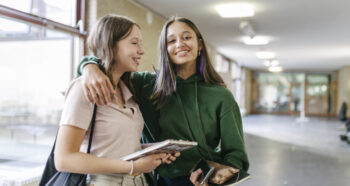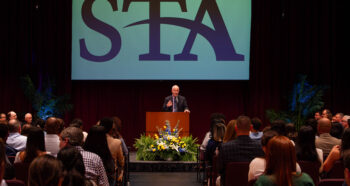Schools in Denmark reopened on 15 April, just over a month after closing due to the coronavirus outbreak. Two months on, school leaders, teachers and pupils from St Josef’s International School, Roskilde, and the Headteacher at Rygaards International School, Hellerup, explain how staff and students alike have risen to the challenge of teaching and learning in the classroom amid new and unusual circumstances.
The Danish Health Authorities, like many governments around the world, have imposed strict rules on schools reopening.
Start times, lunch breaks and finishing times have been staggered, and there have been no canteens open – students and staff take packed lunches. No parents or visitors have been allowed on school grounds and there has been a strong emphasis on hygiene.
Social distancing rules have gradually been relaxed, and when secondary schools returned in the second phase of reopening in the middle of May, pupils were allowed back in their original classrooms and at desks placed one metre apart, instead of two.
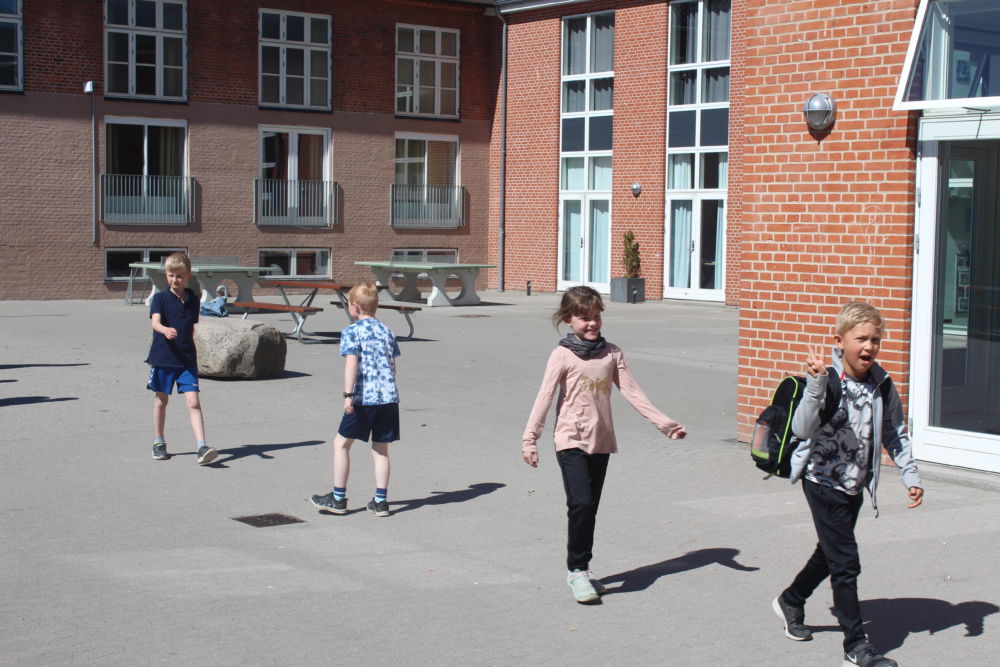
Shirley Jacobsen, Head of Rygaards International School, Hellerup, Denmark
The children are thrilled to be back, smiling, playing, and laughing with their classmates.
Once we had been open a few days, and our new measures were more established, those parents who had been sceptical about sending their children back to school soon followed other parents and had their child attend as well.
The leadership and teaching staff are also really pleased to be back. As one teacher said: ‘I went into teaching to work with children, not to sit on a computer all day’. Teachers also feel freer to teach new concepts rather than worrying about how the new concepts would be received in distance learning.

Sparking creativity
The new restrictions mean we can’t interact the way we usually do, and there are still restrictions in how the children can play together. But these limitations spark creativity and the children invent new games and play in ways where social distancing is part of the games.
Despite there being less group study – pair and group work has been possible only when the lesson is conducted outdoors – the pupils have had more opportunity to discuss their work, especially during phase one when class sizes were much smaller.
The smaller classes also allowed for more individual help to be given, so teachers don’t think that children are getting behind with their studies.
We’ve had to make many adjustments and adapt to new ways, but we’ve proved it’s possible to run the school in these conditions and have seen some positive learning outcomes from it.
Children are learning many new skills that will help them grow, adapt, and navigate future challenges. They’re becoming more independent and more reflective as they’ve had to play a bigger role in evaluating their own work.
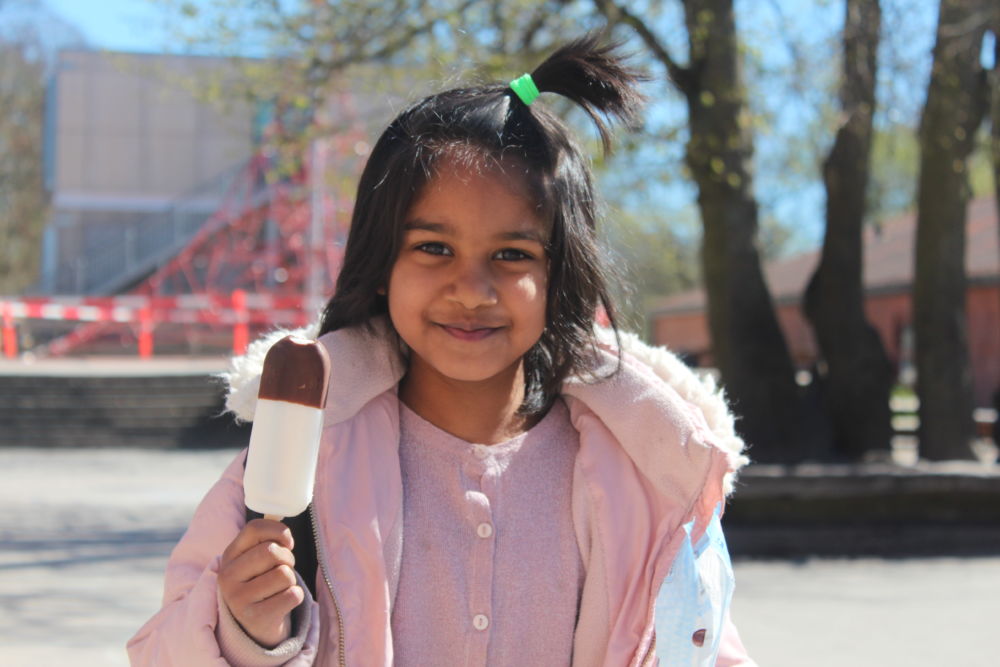
Dom Maher, Head of St Josef’s International School, Roskilde, Denmark:
Getting the children back to school was very important. School is about much more than just the curriculum. Being with others at school is very important for a child’s social and emotional wellbeing and development.
Getting them back has not been overly difficult, I think it was more challenging setting up and monitoring remote learning.
When the primary pupils returned, they happily followed rules because they were glad to be back at school.
It has been much harder with lower secondary pupils. Teenagers tend to think they’re invincible, so they don’t care about social distancing, especially as the required distance is only one metre, which isn’t very much. So they’re behaving like nothing has changed.
There has been a change to the standard and style of teaching, it’s impossible to avoid that. For example, children can no longer work in groups and teachers may not offer up-close support.

Clever solutions
However, adversity brings some clever solutions. Children have been learning to work collaboratively using things like Microsoft Teams with the teacher working in one room, broadcasting to the other room via projector.
Staggered lunch breaks have also been a positive. There is more space in the playground and children run around more. I would like to see this stay. To create even more space in the playground, we’ve been taking groups to local parks at break times. This has been great for the children and I’d also like to see this practice remain.
We’re still doing remote and physical learning for some lower secondary pupils and we’re very interested to see how this goes, as it could be something we continue to do. Going forward, we’ll definitely use the remote learning practises we learnt during lockdown to support students who are ill, in hospital, or are unable to attend school, for example because of anxiety.
Overall, teachers are pleased to be back, pupils are happy and engaged, and parents are reassured. Everything from our perspective has run smoothly.
Alison Eriksen is a Year 4 teacher at St Josef’s International School
There has been a positive attitude to being back together. The pupils also enjoy having a teacher around after so long without one. Initially, they sought more help with work as they were used to being at home and having an adult focused on them a lot of the time.
There were some imbalances between pupils – those that did well at home were not necessarily the ones that usually do well in school, and vice versa.
I’ve had conversations with some of the children about this and even changed the standard of work I will accept as I can say to them: ‘I know you can present this better or get more done, because you did it at home’.
With others, the differences were more to do with too much parent help or not enough.
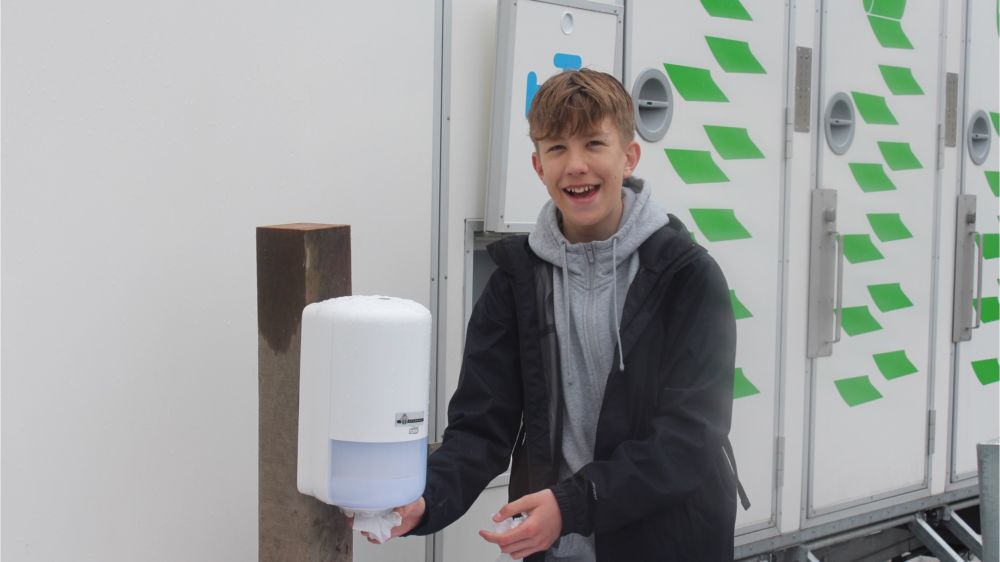
Highly motivated
The pandemic has highlighted that we have some highly motivated students and parents, and that we can use technology to try new and exciting things.
It has also made clear how important the personal connections are, between teachers and students, and between the students themselves. It has shown how much more they learn from each other when they’re able to problem-solve in groups. They may be able to get more writing done at home and even fill in more maths sheets, but they reach understanding and remember more if they learn it from each other.
Sophie Jørgensen, aged 12
It feels incredible to be back. I don’t miss remote learning as it was difficult to understand what was going on, and we had problems with internet connections and attendances.
The best thing about it was group work. It was a good way of keeping in touch with classmates and we got a chance to give our opinions and express our feelings about what was happening in the world.
I’m satisfied that I was able to keep up but I wouldn’t want to keep any element of remote learning. I didn’t really enjoy it and I felt less engaged.
Now we’re back at school, we get proper learning – during lockdown it was difficult to know what to do and get help from the teachers. And video calls were a pain!
I have found the changes that have enabled us to return to school to be exceptional but acceptable. I feel I’m still able to be taught in almost the same way as before school was closed.



